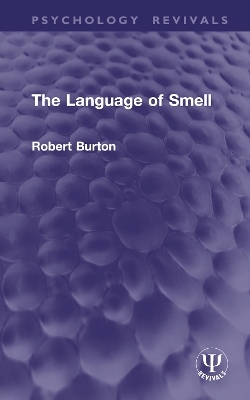
The Language of Smell
Seiten
2025
Routledge (Verlag)
978-1-032-99285-3 (ISBN)
Routledge (Verlag)
978-1-032-99285-3 (ISBN)
- Noch nicht erschienen (ca. April 2025)
- Versandkostenfrei
- Auch auf Rechnung
- Artikel merken
The sense of smell is at least equally important to may animals as sight and hearing. This important fact had previously been largely overlooked and is the subject of this fascinating study of the animal kingdom, The Language of Smell, originally published in 1976.
Robert Burton, a zoologist and writer on wildlife, surveys the use of the sense of smell, from ants and butterflies, through birds, to whales and other mammals, and to human beings themselves. He describes the organs of smell and discusses the theories as to the way that odours are converted into nerve impulses. He considers the recent scientific advances in the field, including the observations on wild animals and laboratory experiments which show how smell is used for finding food, repelling enemies and for navigation. Many animals also use smell for communication. They produce special odours, called pheromones, that act as signals to members of their own species. Robert Burton shows how pheromones play a particularly important part in the social and sexual lives of insects and mammals, and that human beings also make more use of their sense of smell than had been thought.
Throughout the book illustrations and line drawings are used to clarify the descriptions of the vital and exciting ‘language of smell’.
Robert Burton, a zoologist and writer on wildlife, surveys the use of the sense of smell, from ants and butterflies, through birds, to whales and other mammals, and to human beings themselves. He describes the organs of smell and discusses the theories as to the way that odours are converted into nerve impulses. He considers the recent scientific advances in the field, including the observations on wild animals and laboratory experiments which show how smell is used for finding food, repelling enemies and for navigation. Many animals also use smell for communication. They produce special odours, called pheromones, that act as signals to members of their own species. Robert Burton shows how pheromones play a particularly important part in the social and sexual lives of insects and mammals, and that human beings also make more use of their sense of smell than had been thought.
Throughout the book illustrations and line drawings are used to clarify the descriptions of the vital and exciting ‘language of smell’.
Robert Burton left Cambridge in 1963 and served for two years with the British Antarctic Survey. In 1972 he returned to the Antarctic for six months to study albatrosses.
1. The Use of Smell 2. The Mechanism of Smell 3. Attracting and Repelling 4. Homing and Hunting 5. The Odorous World of Insects 6. The Social Insects 7. Smell in Birds and Mammals 8. The Social Life of Mammals 9. What About Man? Further Reading. Index.
| Erscheint lt. Verlag | 1.4.2025 |
|---|---|
| Reihe/Serie | Psychology Revivals |
| Verlagsort | London |
| Sprache | englisch |
| Maße | 138 x 216 mm |
| Themenwelt | Geisteswissenschaften ► Psychologie |
| Naturwissenschaften ► Biologie ► Zoologie | |
| ISBN-10 | 1-032-99285-9 / 1032992859 |
| ISBN-13 | 978-1-032-99285-3 / 9781032992853 |
| Zustand | Neuware |
| Haben Sie eine Frage zum Produkt? |
Mehr entdecken
aus dem Bereich
aus dem Bereich


